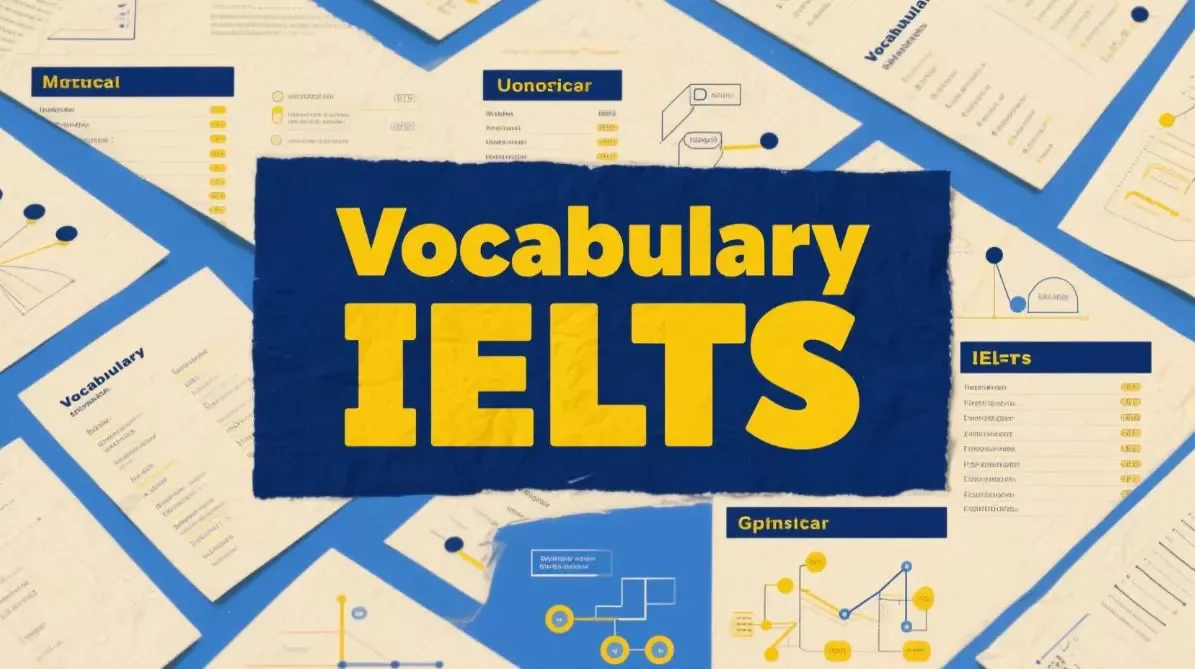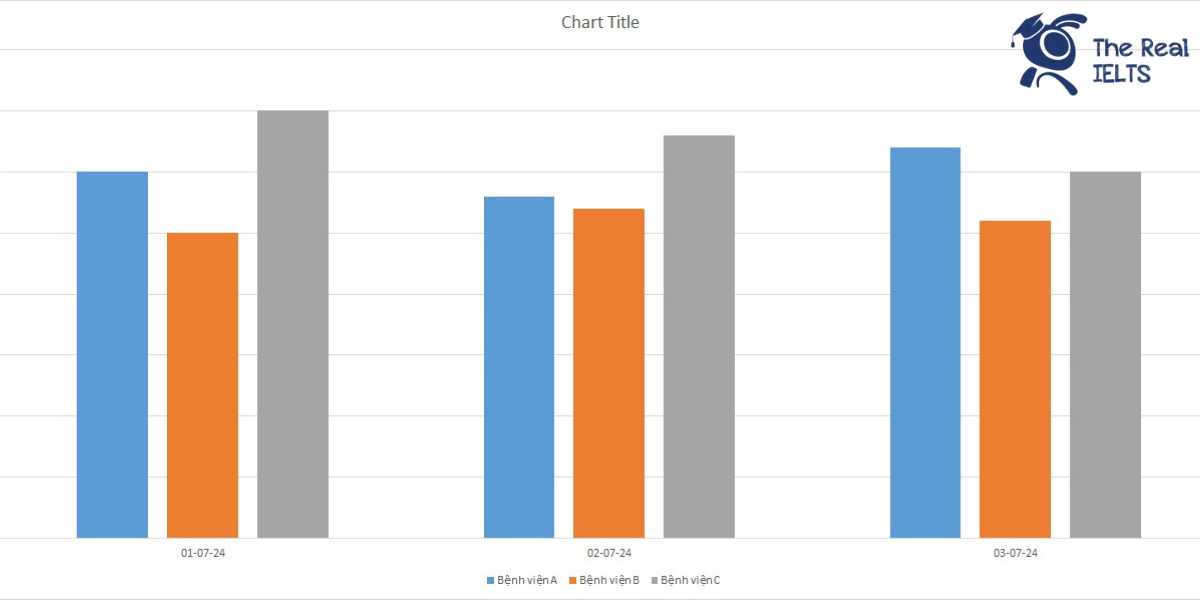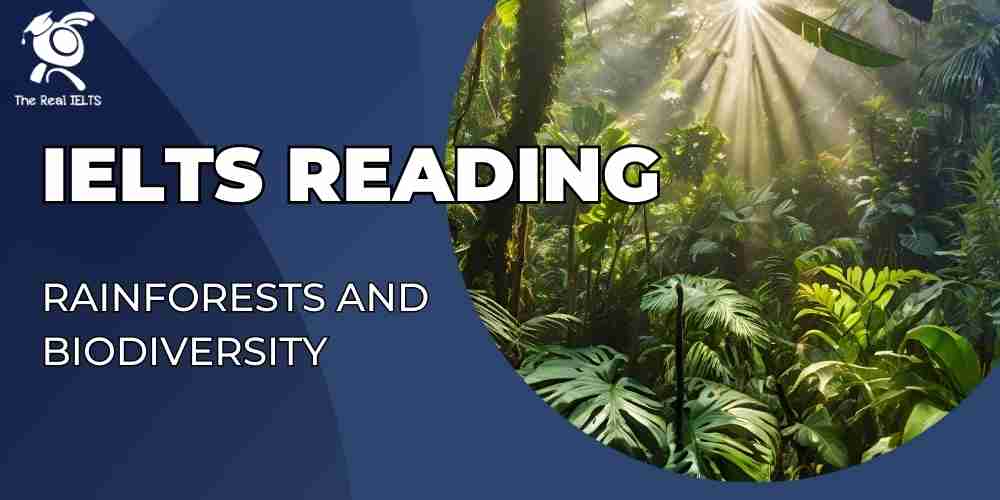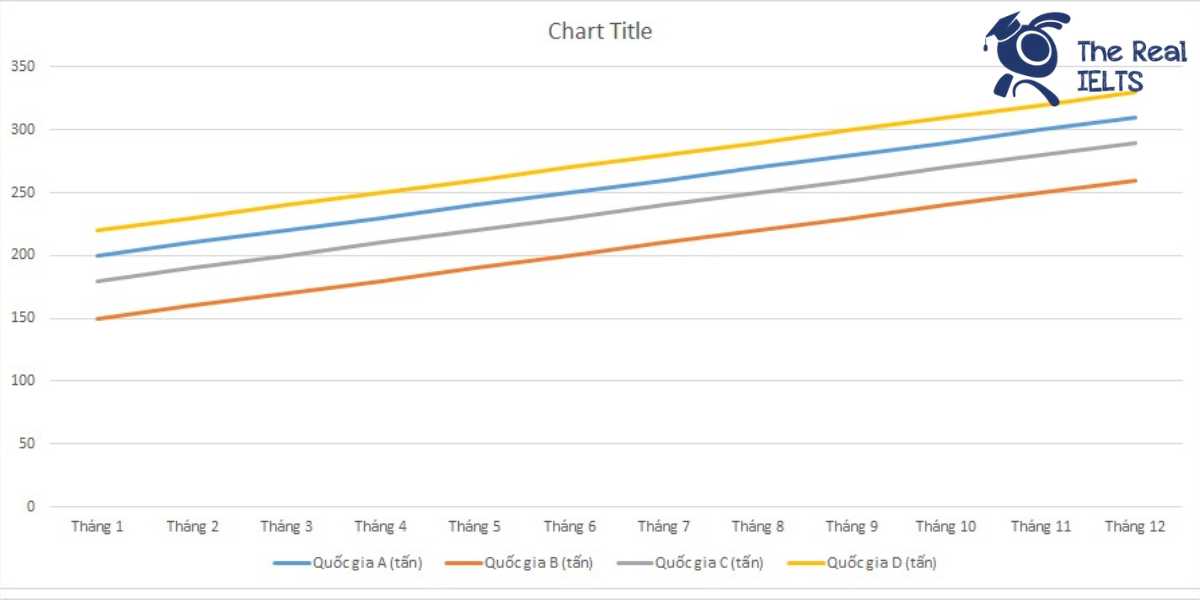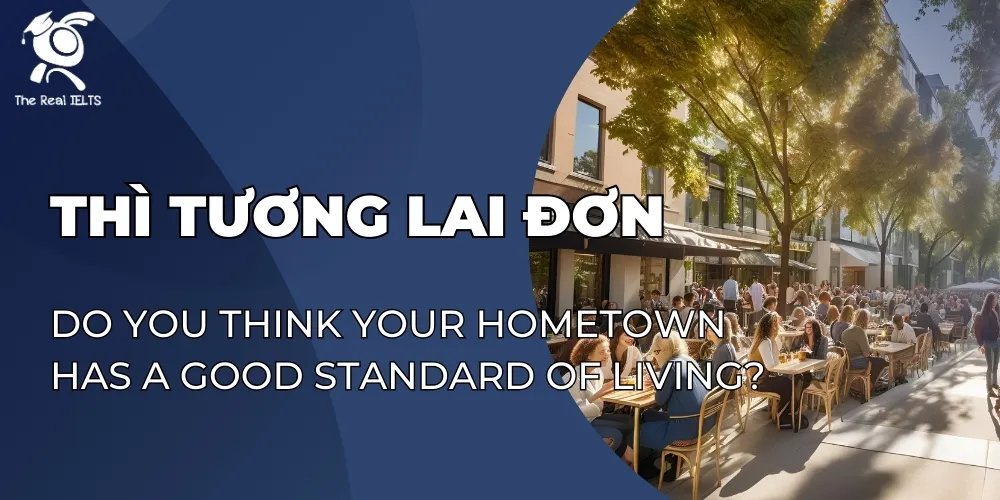Để chinh phục kỳ thi IELTS, kỹ năng đọc hiểu là yếu tố cốt lõi, đòi hỏi thí sinh xử lý hiệu quả các văn bản học thuật phức tạp trong thời gian giới hạn. IELTS Reading đánh giá khả năng nắm bắt ý chính, phân tích chi tiết và suy luận logic từ các đoạn văn đa dạng. Với độ khó tăng dần, người học cần áp dụng kỹ thuật đọc chiến lược, từ skimming đến scanning, để tối ưu hóa điểm số và đạt mục tiêu band cao.
Đọc thêm: IELTS Reading Practice Test: Drought and Water Scarcity.
IELTS Reading Practice Test: Tropical Rainforests and Deforestation
Tropical rainforests, often called the “lungs of the Earth,” play a critical role in regulating the planet’s climate by absorbing carbon dioxide and producing oxygen. Found primarily in regions like the Amazon, Congo Basin, and Southeast Asia, these forests host unparalleled biodiversity, with millions of plant and animal species. However, deforestation poses a severe threat to their survival. Logging, agriculture, and urban expansion are the primary drivers, clearing vast areas annually.
In the Amazon, over 20% of the rainforest has been lost in the past 50 years, largely due to cattle ranching and soybean farming. This destruction releases stored carbon, accelerating climate change. Indigenous communities, who rely on forests for their livelihoods, face displacement and loss of cultural heritage. In Southeast Asia, palm oil plantations are a major cause of deforestation, threatening species like orangutans.
Efforts to combat deforestation include reforestation projects and stricter regulations. Brazil has implemented policies to reduce illegal logging, with some success. Non-governmental organizations promote sustainable farming to balance economic needs with conservation. However, challenges remain, such as weak enforcement and global demand for timber and crops. Emerging technologies, like satellite monitoring, help track deforestation in real-time, aiding conservation efforts.
Despite these measures, the loss of rainforests continues at an alarming rate. Protecting these ecosystems requires global cooperation, as their benefits extend beyond borders. By addressing deforestation, we can preserve biodiversity and mitigate climate change, ensuring a healthier planet for future generations.
Câu hỏi
Questions 1–40
Question 1 (Multiple Choice)
What is a key role of tropical rainforests mentioned in the passage?
A. Providing timber for global markets
B. Regulating the planet’s climate
C. Supporting urban expansion
D. Increasing agricultural output
Question 2 (Multiple Choice)
What is a major cause of deforestation in the Amazon?
A. Tourism development
B. Cattle ranching and soybean farming
C. Mining operations
D. Road construction
Question 3 (True/False/Not Given)
Tropical rainforests produce more carbon dioxide than they absorb.
A. True
B. False
C. Not Given
Question 4 (True/False/Not Given)
Palm oil plantations in Southeast Asia threaten orangutan populations.
A. True
B. False
C. Not Given
Question 5 (Yes/No/Not Given)
Does the passage suggest that deforestation only affects local communities?
A. Yes
B. No
C. Not Given
Question 6 (Yes/No/Not Given)
Are satellite monitoring systems mentioned as a tool for tracking deforestation?
A. Yes
B. No
C. Not Given
Question 7 (Matching Information)
Which paragraph discusses the impact of deforestation on indigenous communities?
A. Paragraph 1
B. Paragraph 2
C. Paragraph 3
D. Paragraph 4
Question 8 (Matching Information)
In which paragraph are reforestation projects mentioned?
A. Paragraph 1
B. Paragraph 2
C. Paragraph 3
D. Paragraph 4
Question 9 (Matching Headings)
Choose the correct heading for Paragraph 1:
A. Causes and Consequences of Deforestation
B. Importance of Tropical Rainforests
C. Solutions to Deforestation
D. Global Demand for Resources
Question 10 (Matching Headings)
Choose the correct heading for Paragraph 3:
A. Technological Advances in Conservation
B. Efforts to Combat Deforestation
C. Biodiversity in Rainforests
D. Economic Impacts of Deforestation
Question 11 (Matching Sentence Endings)
Deforestation in the Amazon is driven by …
A. the need for sustainable farming.
B. cattle ranching and soybean farming.
C. reforestation projects.
D. global cooperation efforts.
Question 12 (Matching Sentence Endings)
Efforts to reduce deforestation include …
A. promoting urban expansion.
B. stricter regulations and reforestation.
C. increasing palm oil production.
D. reducing biodiversity.
Question 13 (Sentence Completion)
Tropical rainforests absorb _______ to help regulate the planet’s climate.
Question 14 (Sentence Completion)
In Southeast Asia, _______ plantations are a major cause of deforestation.
Question 15 (Summary Completion)
Complete the summary using words from the passage:
Tropical rainforests are vital for maintaining _______ and supporting millions of species.
Question 16 (Summary Completion)
Deforestation contributes to climate change by releasing stored _______.
Question 17 (Diagram Label Completion)
Label the diagram of a rainforest ecosystem:
The process by which rainforests take in carbon dioxide is called _______.
Question 18 (Diagram Label Completion)
Label the diagram of deforestation causes:
A major agricultural activity in the Amazon is _______ farming.
Question 19 (Short Answer Questions)
Name one region mentioned where tropical rainforests are located.
Question 20 (Short Answer Questions)
What percentage of the Amazon rainforest has been lost in the past 50 years?
Question 21 (Table Completion)
Complete the table below with information from the passage:
| Region/Activity | Cause of Deforestation | Consequence |
|---|---|---|
| Amazon | Cattle ranching | ___________ |
| Southeast Asia | ___________ | Threat to orangutans |
| Global | Logging | ___________ |
Question 22 (Multiple Choice)
What is one challenge mentioned in combating deforestation?
A. Lack of global demand for crops
B. Weak enforcement of regulations
C. Reduced need for timber
D. Absence of conservation efforts
Question 23 (True/False/Not Given)
Brazil has completely stopped illegal logging.
A. True
B. False
C. Not Given
Question 24 (Yes/No/Not Given)
Does the passage suggest that tropical rainforests benefit people worldwide?
A. Yes
B. No
C. Not Given
Question 25 (Matching Information)
Which paragraph mentions the role of non-governmental organizations?
A. Paragraph 1
B. Paragraph 2
C. Paragraph 3
D. Paragraph 4
Question 26 (Matching Headings)
Choose the correct heading for Paragraph 2:
A. Solutions to Deforestation
B. Regional Impacts of Deforestation
C. Technological Innovations
D. Importance of Rainforests
Question 27 (Sentence Completion)
Brazil has implemented policies to reduce _______ logging.
Question 28 (Summary Completion)
Complete the summary:
Indigenous communities face _______ due to deforestation in the Amazon.
Question 29 (Short Answer Questions)
What is one technology mentioned for monitoring deforestation?
Question 30 (Diagram Label Completion)
Label the diagram of conservation efforts:
A strategy to restore forests is called _______.
Question 31 (Multiple Choice)
What is one consequence of deforestation mentioned in the passage?
A. Increased biodiversity
B. Acceleration of climate change
C. Reduced agricultural output
D. Improved livelihoods for indigenous communities
Question 32 (True/False/Not Given)
Deforestation has no impact on global climate change.
A. True
B. False
C. Not Given
Question 33 (Yes/No/Not Given)
Does the passage suggest that reforestation is a complete solution to deforestation?
A. Yes
B. No
C. Not Given
Question 34 (Matching Sentence Endings)
Protecting rainforests requires …
A. increased logging activities.
B. global cooperation.
C. reduced biodiversity.
D. more urban expansion.
Question 35 (Sentence Completion)
Non-governmental organizations promote _______ farming to address deforestation.
Question 36 (Summary Completion)
Complete the summary:
The passage states that deforestation threatens _______ and contributes to climate change.
Question 37 (Short Answer Questions)
Name one species threatened by deforestation in Southeast Asia.
Question 38 (Table Completion)
Complete the table below with information from the passage:
| Region | Conservation Effort | Challenge |
|---|---|---|
| Brazil | ___________ | Weak enforcement |
| Global | Satellite monitoring | ___________ |
Question 39 (Multiple Choice)
What nickname is given to tropical rainforests in the passage?
A. Green deserts
B. Lungs of the Earth
C. Carbon sinks
D. Biodiversity hubs
Question 40 (True/False/Not Given)
All tropical rainforests are located in the Amazon.
A. True
B. False
C. Not Given
Đáp án và Giải thích
Question 1
Correct Option: B
Explanation: Bài đọc nêu rằng rừng nhiệt đới có vai trò quan trọng trong việc “regulating the planet’s climate by absorbing carbon dioxide and producing oxygen.” Lựa chọn B đúng vì nó phản ánh vai trò này. Các lựa chọn khác không được đề cập hoặc không chính xác.
Question 2
Correct Option: B
Explanation: Bài đọc chỉ ra rằng “cattle ranching and soybean farming” là nguyên nhân chính gây phá rừng ở Amazon. Lựa chọn B khớp với thông tin này. Các lựa chọn khác không được đề cập.
Question 3
**Correct Option….
Question 3
Correct Option: B
Explanation: Bài đọc nêu rằng rừng nhiệt đới hấp thụ carbon dioxide và tạo ra oxy: “absorbing carbon dioxide and producing oxygen.” Do đó, câu nói rằng rừng nhiệt đới tạo ra nhiều carbon dioxide hơn là sai, nên đáp án là B (False).
Question 4
Correct Option: A
Explanation: Bài đọc xác nhận rằng các đồn điền dầu cọ ở Đông Nam Á đe dọa các loài như khỉ đột: “palm oil plantations are a major cause of deforestation, threatening species like orangutans.” Câu này đúng, nên đáp án là A (True).
Question 5
Correct Option: B
Explanation: Bài đọc cho thấy phá rừng ảnh hưởng không chỉ đến cộng đồng địa phương mà còn đến khí hậu toàn cầu và đa dạng sinh học: “their benefits extend beyond borders.” Do đó, câu hỏi này trả lời là “No” vì phá rừng không chỉ ảnh hưởng đến cộng đồng địa phương.
Question 6
Correct Option: A
Explanation: Bài đọc đề cập đến việc sử dụng công nghệ giám sát vệ tinh để theo dõi phá rừng: “Emerging technologies, like satellite monitoring, help track deforestation in real-time.” Câu trả lời là “Yes.”
Question 7
Correct Option: B
Explanation: Đoạn 2 thảo luận về tác động của phá rừng đối với cộng đồng bản địa: “Indigenous communities, who rely on forests for their livelihoods, face displacement and loss of cultural heritage.” Đáp án đúng là B.
Question 8
Correct Option: C
Explanation: Các dự án tái trồng rừng được đề cập ở đoạn 3: “Efforts to combat deforestation include reforestation projects and stricter regulations.” Đáp án đúng là C.
Question 9
Correct Option: B
Explanation: Đoạn 1 giới thiệu vai trò của rừng nhiệt đới, như điều hòa khí hậu và đa dạng sinh học. Tiêu đề “Importance of Tropical Rainforests” phù hợp nhất.
Question 10
Correct Option: B
Explanation: Đoạn 3 thảo luận về các nỗ lực chống phá rừng, như tái trồng rừng và quy định chặt chẽ hơn. Tiêu đề “Efforts to Combat Deforestation” là phù hợp nhất.
Question 11
Correct Option: B
Explanation: Bài đọc nêu rằng phá rừng ở Amazon do “cattle ranching and soybean farming.” Lựa chọn B khớp với thông tin này.
Question 12
Correct Option: B
Explanation: Bài đọc đề cập rằng các nỗ lực giảm phá rừng bao gồm “reforestation projects and stricter regulations.” Lựa chọn B đúng.
Question 13
Correct Answer: carbon dioxide
Explanation: Bài đọc nêu rằng rừng nhiệt đới hấp thụ “carbon dioxide” để điều hòa khí hậu. Từ này phù hợp để điền vào chỗ trống.
Question 14
Correct Answer: palm oil
Explanation: Bài đọc xác nhận rằng ở Đông Nam Á, “palm oil plantations” là nguyên nhân chính gây phá rừng. Từ này phù hợp.
Question 15
Correct Answer: biodiversity
Explanation: Bài đọc nêu rằng rừng nhiệt đới hỗ trợ “unparalleled biodiversity” và điều hòa khí hậu. Từ “biodiversity” phù hợp với tóm tắt.
Question 16
Correct Answer: carbon
Explanation: Bài đọc giải thích rằng phá rừng giải phóng “stored carbon,” góp phần vào biến đổi khí hậu. Từ “carbon” phù hợp.
Question 17
Correct Answer: absorption
Explanation: Quá trình rừng nhiệt đới hấp thụ carbon dioxide được mô tả trong bài. Từ “absorption” phù hợp để gắn nhãn sơ đồ.
Question 18
Correct Answer: soybean
Explanation: Bài đọc nêu rằng “soybean farming” là một hoạt động nông nghiệp chính gây phá rừng ở Amazon. Từ “soybean” là đúng.
Question 19
Correct Answer: Congo Basin
Explanation: Bài đọc liệt kê Congo Basin là một khu vực có rừng nhiệt đới. Đáp án này chính xác.
Question 20
Correct Answer: Over 20%
Explanation: Bài đọc nêu rằng “over 20% of the rainforest has been lost in the past 50 years” ở Amazon. Đáp án này đúng.
Question 21
Correct Answers:
- Amazon Consequence: Climate change
- Southeast Asia Cause: Palm oil plantations
- Global Consequence: Loss of biodiversity
Explanation: - Phá rừng ở Amazon giải phóng carbon, “accelerating climate change.”
- Ở Đông Nam Á, “palm oil plantations” là nguyên nhân phá rừng.
- Phá rừng toàn cầu đe dọa “biodiversity,” như được đề cập trong bài.
Question 22
Correct Option: B
Explanation: Bài đọc nêu rằng một thách thức trong việc chống phá rừng là “weak enforcement” của các quy định. Lựa chọn B đúng.
Question 23
Correct Option: B
Explanation: Bài đọc cho biết Brazil đã giảm khai thác gỗ bất hợp pháp “with some success,” nhưng không nói rằng đã hoàn toàn dừng lại. Câu này sai, nên đáp án là B (False).
Question 24
Correct Option: A
Explanation: Bài đọc nêu rằng lợi ích của rừng nhiệt đới “extend beyond borders,” ám chỉ lợi ích toàn cầu. Câu trả lời là “Yes.”
Question 25
Correct Option: C
Explanation: Vai trò của các tổ chức phi chính phủ được đề cập ở đoạn 3: “Non-governmental organizations promote sustainable farming.” Đáp án đúng là C.
Question 26
Correct Option: B
Explanation: Đoạn 2 thảo luận về tác động khu vực của phá rừng, như ở Amazon và Đông Nam Á. Tiêu đề “Regional Impacts of Deforestation” phù hợp nhất.
Question 27
Correct Answer: illegal
Explanation: Bài đọc nêu rằng Brazil đã triển khai chính sách để giảm “illegal logging.” Từ “illegal” phù hợp.
Question 28
Correct Answer: displacement
Explanation: Bài đọc nêu rằng cộng đồng bản địa đối mặt với “displacement” do phá rừng. Từ này phù hợp.
Question 29
Correct Answer: Satellite monitoring
Explanation: Bài đọc đề cập đến “satellite monitoring” như một công nghệ để theo dõi phá rừng. Đáp án này đúng.
Question 30
Correct Answer: reforestation
Explanation: Bài đọc đề cập đến “reforestation projects” như một chiến lược khôi phục rừng. Từ “reforestation” là đúng.
Question 31
Correct Option: B
Explanation: Bài đọc nêu rằng phá rừng “releases stored carbon, accelerating climate change.” Lựa chọn B đúng.
Question 32
Correct Option: B
Explanation: Bài đọc xác nhận rằng phá rừng góp phần vào biến đổi khí hậu bằng cách giải phóng carbon. Câu này sai, nên đáp án là B (False).
Question 33
Correct Option: B
Explanation: Bài đọc nêu rằng vẫn còn thách thức như thực thi yếu, ngụ ý rằng tái trồng rừng không phải là giải pháp hoàn chỉnh. Câu trả lời là “No.”
Question 34
Correct Option: B
Explanation: Bài đọc nêu rằng bảo vệ rừng nhiệt đới cần “global cooperation.” Lựa chọn B đúng.
Question 35
Correct Answer: sustainable
Explanation: Bài đọc nêu rằng các tổ chức phi chính phủ thúc đẩy “sustainable farming.” Từ “sustainable” phù hợp.
Question 36
Correct Answer: biodiversity
Explanation: Bài đọc nhấn mạnh rằng phá rừng đe dọa “biodiversity” và góp phần vào biến đổi khí hậu. Từ này phù hợp.
Question 37
Correct Answer: Orangutans
Explanation: Bài đọc đề cập rằng khỉ đột (orangutans) bị đe dọa bởi phá rừng ở Đông Nam Á. Đáp án này đúng.
Question 38
Correct Answers:
- Brazil Conservation Effort: Stricter regulations
- Global Challenge: Global demand for timber
Explanation: - Bài đọc nêu rằng Brazil đã triển khai “stricter regulations” để giảm phá rừng.
- Thách thức toàn cầu bao gồm “global demand for timber and crops.”
Question 39
Correct Option: B
Explanation: Bài đọc gọi rừng nhiệt đới là “lungs of the Earth.” Lựa chọn B đúng.
Question 40
Correct Option: B
Explanation: Bài đọc liệt kê các khu vực như Amazon, Congo Basin, và Đông Nam Á, cho thấy không phải tất cả rừng nhiệt đới đều ở Amazon. Câu này sai, nên đáp án là B (False).



